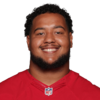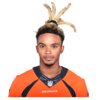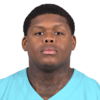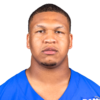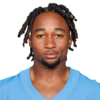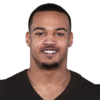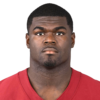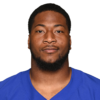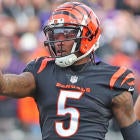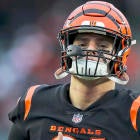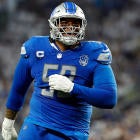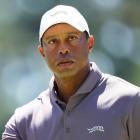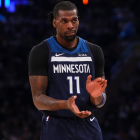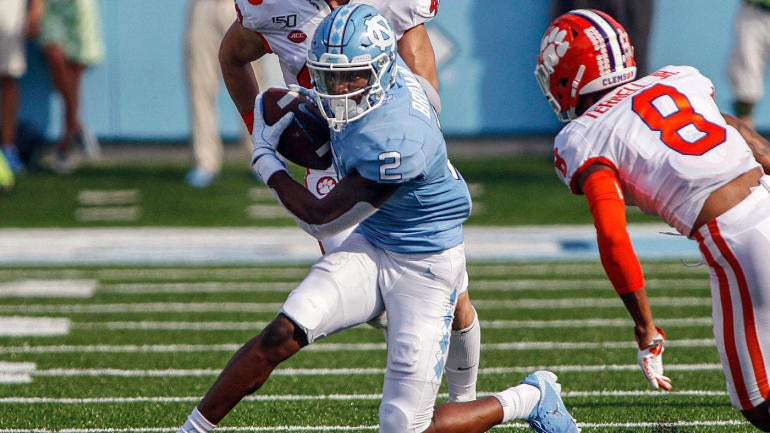
For my annual Better-Than Team, which is made up of players I like more than the scouts, I try to limit the number of players from one position group.
That didn't happen this year. Not with a loaded receiver group.
It's likely that three receivers will be off the board by the 15th pick in the first round, and maybe even three in the top 12. They are LSU's Ja'Marr Chase and Alabama's DeVonta Smith and Jaylen Waddle.
They are the consensus top receivers in this draft, but don't get the idea that's where the receiver talent ends in this class.
That's why I have five others on this Better-Than Team, including my captain, North Carolina receiver Dyami Brown. Being the captain of this team has some history of success. Two of those players from the past were Lavonte David and Grady Jarrett.
In addition to those two, among the players who have made my Better-Than Team — which is usually made of non-first-round players — are Dak Prescott, George Kittle, David Johnson, Tyler Lockett, Deion Jones, Stefon Diggs, Yannick Ngakoue and Za'Darius Smith. There have been misses — like Sean Davis as my captain a few years back — but I enjoy looking for down-the-line players who might end up being steals.
Brown is one of those players. He is an explosive receiver who ran by a lot of defensive backs in college. He had 21 touchdown receptions in his career. But he's much more than just a speed guy. He is solid as a route runner and will only get better as he gets coached up in the NFL.
But the thing that is so attractive is his big-play ability. He averaged at least 20 yards per catch each of the past two seasons. Pop on his game tapes and you will see why. At 6-1, 190 pounds, he puts fear in defensive backs with his ability to run by them with ease. He was clocked at 4.4 at his pro day, but I think he plays faster than that.
Brown will be a star on the next level — maybe even better than one of the big-three receivers in this draft class. That's how much I was impressed by his tape.
But he's not alone. There are four others on this Better-Than Team. They are Tennessee's Josh Palmer, Louisville's Dez Fitzpatrick, Auburn's Anthony Schwarz and Iowa's Ihmir Smith-Marsette. Palmer and Fitzpatrick are bigger receivers, while Schwartz and Smith-Marsette can run. None will be first-round picks, and some might even be third-day picks, but the talent is there to become good NFL receivers.
Here is the entire team:
Davis Mills, QB, Stanford
Mills went to Stanford as a big-time recruit from Georgia, but he didn't really become the full-time starter until last season. He did start six games in 2019 in place of the injured K.J. Costello. He started six games last season in the COVID-shortened season. Mills has good size at 6-4, 225 pounds and the ball pops off his right arm. It's just a matter of getting more experience. I think he will develop into a quality NFL starter on the next level and will end up being better than one or two of the top five quarterbacks in this draft.
Aaron Banks, G, Notre Dame
He is a power player, who played left guard for Notre Dame. He lined up next to tackle Liam Eichenberg, who some think could be a first-round pick. But when watching Eichenberg, my eyes drifted to Banks and his power game. After a serious study of Banks, I expect him to become a longtime starter in the NFL and go to some Pro Bowls. He does need to work on his pass protection.
Tommy Tremble, TE, Notre Dame
He hasn't been much of a pass catcher in his career with the Irish, but he is one of the best blocking tight ends in this draft. I do think he has the athletic ability to improve as a pass catcher, which would make him a well-rounded tight end. He played behind Cole Kmet in 2019 and last year star freshman Michael Mayer was Notre Dame's top pass-catching tight end. Tremble will be a steal for the team that takes him in the second round. Sit back and watch his improvement as a receiver in the NFL and just remember that a lot of big-time tight ends come in the second and third rounds of the draft.
Ihmir Smith-Marsette, WR, Iowa
Teams looking for a burner in the later rounds should take a long look at Smith-Marsette. He can fly and averaged 14.7 yards per catch at Iowa. He is also a capable kick returner, which will add to his value. He does need to get stronger, but he has the frame to do it. He was arrested for DUI at Iowa, which is a concern and also injured an ankle while flipping into the end zone to celebrate a score. But the speed will be what draws him to teams, and it should.
Demetric Felton, RB, UCLA
If you love "air backs" like I do, this is the guy for you. He played running back and receiver in Chip Kelly's offense and did a nice job doing both. He can win in the passing game, but also showed he's a capable runner. He ran for 206 yards last season against Arizona. He also caught seven passes for 46 yards and a touchdown against Colorado. He isn't a big back at 5-9, 190 pounds. Some view him as a slot receiver, but I see him more as a third-down back and return man, who can also play in the slot.
Jamar Johnson, S, Indiana
He has played slot corner and safety and has the range that teams crave on the back end. He had four picks last season, with one of those being a great play against Ohio State in the middle of the field where he read Justin Fields' eyes to make the pick. He also had a sack in that game as a blitzer. The one knock on him is that he lowers his head when he tackles. That's a no-no on the next level. But his ability to cover a lot of ground on the back end will make him a nice third- or fourth-round safety.
Jaylen Twyman, DT, Pittsburgh
Twyman opted out of the 2002 season, but his 2019 tape shows a player who can get pressure on the quarterback from the interior. He isn't big at 6-1, 303 pounds, but he has quickness inside to push the pocket. He had 10 1/2 sacks in 2019, which shows that ability. He has to improve as a run player, but the team that gets him will be getting a player who can get inside pressure. He went to Pitt because Aaron Donald was his favorite player, but he reminds me of a guy who was the captain of this Better-Than team when he came out of college: Grady Jarrett. That's high praise in my book.
Kary Vincent Jr, CB, LSU
Teams are always looking for a slot corner, and this should be their guy. Vincent played outside and in the slot, and even some at safety, for the Tigers in his career before opting out last year. But I think his ability to play man coverage will make him an attractive nickel corner. He can fly, too, which will help with the slot coverage. LSU has become known as "DB U" in recent years, and look for Vincent to add to that as a good slot corner at the next level.
Alaric Jackson, T-G, Iowa
He was a three-year starter at left tackle for the Hawkeyes, but I think his best football would be played if he moved inside to guard. Brandon Scherff and Marshal Yanda were two former Iowa tackles who moved inside and became outstanding guards. Jackson should be able to become a starter inside, while being a valuable swing tackle if needed. He doesn't have great athletic ability to handle speed rushers, which is why I think moving inside would help his chances of playing. He became a vegan last year and lost weight, but changed back to non-vegan diet and gained back his power before the Senior Bowl. He is strong, which is why he's a good run blocker. When you start that many games on the offensive line at Iowa, there is talent there.
Asante Samuel Jr., CB, Florida State
He isn't the biggest corner at 5-10, 190 pounds, but he knows how to play the position. The son of former NFL star corner Asante Samuel, he has the tools to be a good starter on the next level. He battles on every play and has the cover skills and technique needed to become a top cover player. If he were two inches taller, he might be in the conversation as best corner prospect in the draft. As it is, he should be a late first- or early second-round pick.
Ronnie Perkins, DE, Oklahoma
He has played with his hand on the ground and standing up in his career. At 6-3, 250 pounds, he plays hard and tough and has the speed needed off the edge. He might be more suited to being a stand-up 3-4 rusher on the next level. He would need to add some weight as a down end, but he is still solid in the run game at that weight, which tells you he's more than willing, which some edge players are not.
Josh Palmer, WR, Tennessee
For teams looking for a good-sized receiver, Palmer fits the bill. At 6-1, 210 pounds, he is a powerful receiver who had some of his best games against some top corners. He beat Alabama's Patrick Surtain II for a touchdown and had a good game against the two Georgia corners. He isn't a burner, but he will be a nice third receiver for a team looking for a strong outside player.
Tony Fields, LB, West Virginia
He transferred to West Virginia last season after three years as a starter at Arizona. At just over 6-feet tall and 222 pounds, he isn't a big player but he plays bigger than he looks. He is a perfect run-and-chase linebacker who racked up a lot of tackles. He does have trouble with guard and centers getting out on him in space, but he is more than willing to take them on. For a third-day pick, he should help a team immediately on special teams and may work his way onto the field with his ability to run and chase.
Anthony Schwartz, WR, Auburn
If you love speed, this is your guy. Schwartz can flat out fly and was once considered a potential Olympic sprinter. He is still raw as a receiver, but is a better route runner than you would think. He was used in a variety of ways at Auburn. I think he will continue to grow as a pass catcher, which will make him a dangerous deep threat for the team that lands him.
Jamin Davis, LB, Kentucky
At 6-3, 235 pounds, he runs well for a linebacker with that size. He plays fast with the ability to run down plays and play well in coverage. He's good at diagnosing and then using his speed to chase down runners. He also does a nice job in coverage and had a pick-six on an athletic play against Tennessee when he dropped into coverage. He was only a starter for a year, which will turn some teams off. It shouldn't. I think he has a chance to be the best linebacker in this class.
Tyler Shelvin, DT, LSU
He is a mountain of a man at 6-3, 350 (or so) pounds and he plays like it. He opted out in 2020, but when the Tigers won the national title in 2019, he was a big part of the defense. He anchored the line against the run, often commanding the double team. There is value in that for a team looking for a nose in a 3-4 or a 4-3 one technique player. He can push the pocket at times as well, but he will mostly be used as a run player on the next level. He does need to keep his weight in check.
Kenneth Gainwell, RB, Memphis
He was a one-year starter at Memphis after opting out last season. He is a smallish back at 5-9, 200 pounds, but he has 4.4 speed and can do a lot of things. He has the home-run speed to rip off long runs and he's also an accomplished receiver out of the backfield. He shared time with Antonio Gibson in 2019 and he has the same type of skill set, but is faster.
Quincy Roche, Edge, Miami
Miami has two edge rushers who will go higher than Roche in Greg Rousseau and Jaelen Phillips. But that doesn't mean Roche can't play. When Rousseau opted out, Roche, who transferred to Miami from Temple last year, became a starter. He went to Miami to challenge himself more after an impressive Temple career. He is an edge rusher who plays hard and will be a player who should stand up as a 3-4 rush player on the next level. He won't wow with his athletic ability, but there is always a place for players like Roche who play hard and want to be good.
Dez Fitzpatrick, WR, Louisville
He's the "other" receiver at Louisville on most lists to Tutu Atwell, but he shouldn't be. Fitzpatrick is a bigger receiver at 6-1 1/2 and 208 pounds, but he's also got good speed and averaged 16.8 yards per catch in his four seasons at Louisville, including an eye-opening 19.4 last season. He ran away from defenders on a quick screen against Boston College for a 69-yard touchdown and also had an 82-yard score against Virginia Tech where he ran by the corner. In a year with a lot of smallish receivers, he would make sense for teams looking for bigger outside players.








